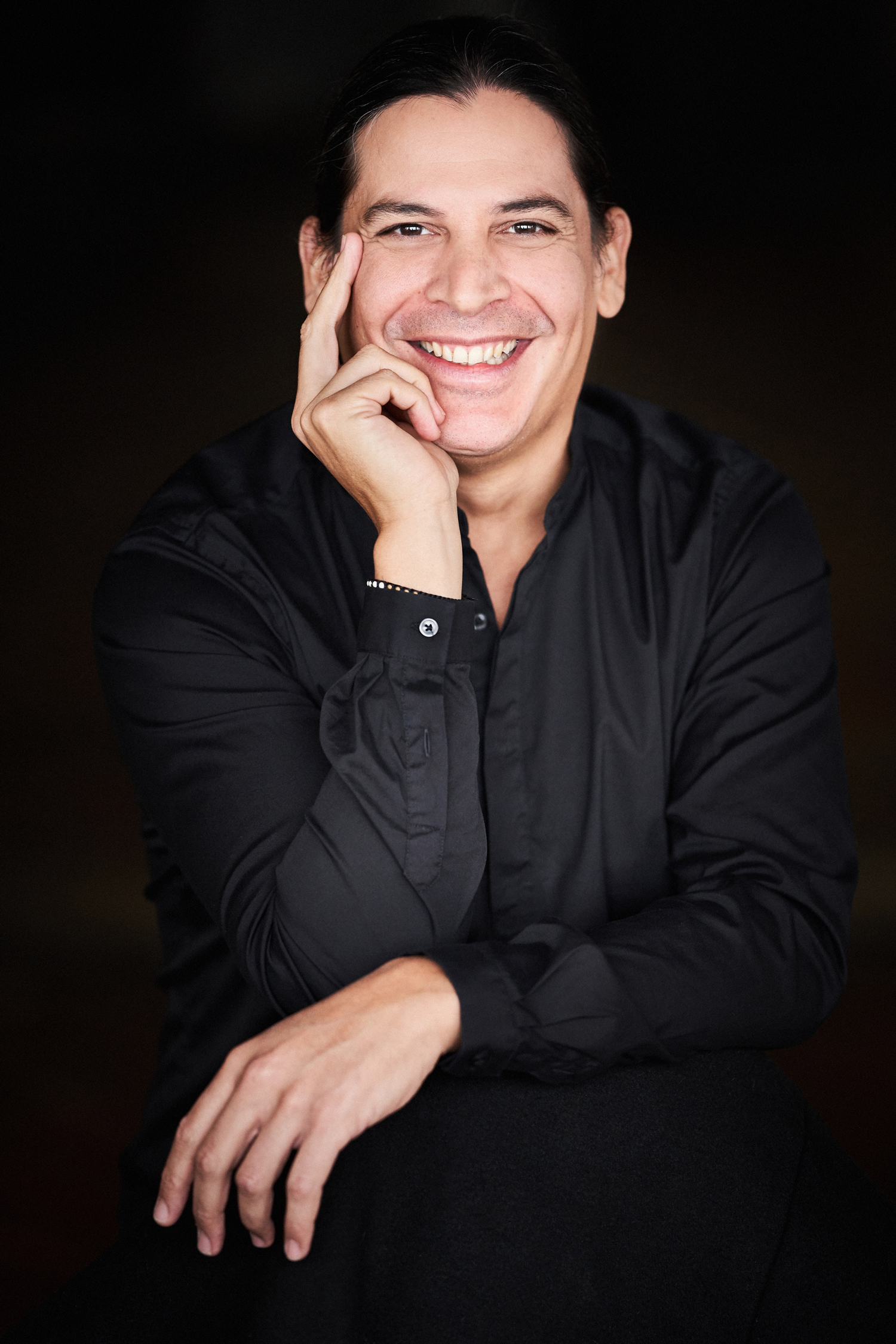
Notes from the Director and Conductor of La bohème
A Note from the Director
by Michael Shell

Being in love can be the most fantastic sensation you’ve ever felt. Especially in the early days of a romance, it can lift everyday moments and make them seem like they are accompanied by a symphony orchestra. With a perfectly timed soundtrack following every action you and your beloved take, it seems like nothing could ever tear you apart. Sadness, pain, and even death cease to exist. This is what Mimi and Rodolfo experience in Act I and II of Puccini’s La bohème. The feeling of being swept away changes as the piece moves on — it becomes larger than Mimi and Rodolfo and will soon engulf them.
Our La bohème takes place in the early 1950s. Everything about Paris in that time becomes even more vibrant, electric, and theatrical when Mimi, Rodolfo, and their friends visit streets of the Latin Quarter of Paris on Christmas Eve. But as the story progresses, the vibrancy and color are slowly removed. The heightened theatricality that carried the characters becomes more pedestrian. The characters’ lives now experience pain and tragedy.
Setting the opera in this early period of post-war art takes us out of the social realism of the 30s and 40s and into a new realm. This setting epitomizes both the abstraction and the expressionism of art and the artist’s life at that time. Art is new, literature is new, and we highlight these sweeping changes in the bohemian world where our artists find themselves.
A Note from the Conductor
by José Luis Gomez

Puccini´s La bohème constitutes an important pillar of any opera conductor’s repertoire, and to have the chance to conduct this piece many times is not only a joy but an incredible experience all together. Puccini’s score is one of complexity and perfection that is difficult to match. The fresh straightforwardness of the musical text in conjunction with the poetry of the words hits directly in the listener’s heart and soul, performance after performance.
La bohème was one of the first works I approached in my opera career, and each time I’ve conducted it, I’ve discovered the enduring greatness of a story that is timeless and universal. The sweetness of youth’s innocence speaks through the joyful melodies and playful passages in the first act. These elements convey unstoppable joie de vivre embraced by the four friends — Rodolfo, Marcello, Colline, and Schaunard — as depicted in the opera’s opening motif. In addition, we hear Puccini’s genius through the soft sound of muted strings and a faint knock on the door, signaling the pivotal moment that alters Rodolfo’s life and destiny. By the end of the act, Rodolfo takes flight alongside the angelic and ethereal Mimì, their harmonious duet becoming one of the most beautiful moments in the entire operatic repertoire.
In this magnificent opera, Puccini offers the conductor and orchestra not only a chance to support the singers through near-impressionistic language, but to also be a clear protagonist of the entire drama, inflicting the actions with colors, textures, and atmospheres that makes one wonder if the music and text are, in fact, a single entity rather than two separate elements.
I personally would like to emphasize in our La bohème all the nuances of the very specific dynamics and articulations that maestro Puccini intended in the score, thereby delivering as literally as possible all the detailed shapes that affect the soloists, the chorus, and the full orchestra.
It is a great honor and responsibility to perform this masterwork at Opera Theatre of Saint Louis and to collaborate with director Michael Shell to bring every emotion of this work to the audience.
Leadership support for La bohème comes from the Steward Family Foundation and the Berges Family Foundation.

Explore the 2024 Festival Season
Season tickets on sale now! Save up to 15% off and snag exclusive subscriber benefits.